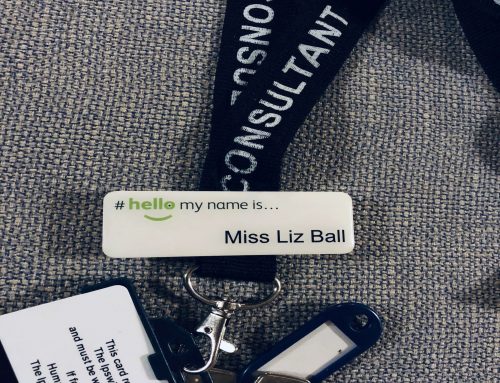It was time to start the maintenance treatment – tablets and injections that will hopefully keep any lingering cancer cells fast asleep, and keep me around for as long as possible. Taking my first Tamoxifen tablet was quite an emotional thing for me. I had to face the fear of what side effects I might get, and deal with a daily reminder that I have had breast cancer, for the next 10 years.
Tamoxifen
To be completely honest, I thought I was going to get away with it. After the first 3 weeks, I hadn’t had any of the awful side effects I’d read about. I couldn’t believe it! The only difference I noticed was that my ankles and calves started to swell due to water retention. So much so that I couldn’t get my jeans off at the end of the day, and resorted to wearing my surgical compression stockings. This was fine whilst it was still cool, but I was a bit concerned about the coming summer months, when knee length socks might look a bit odd with shorts…
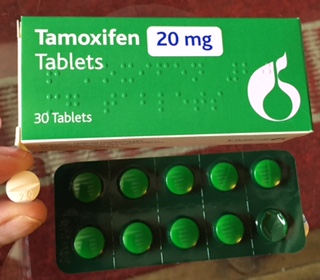
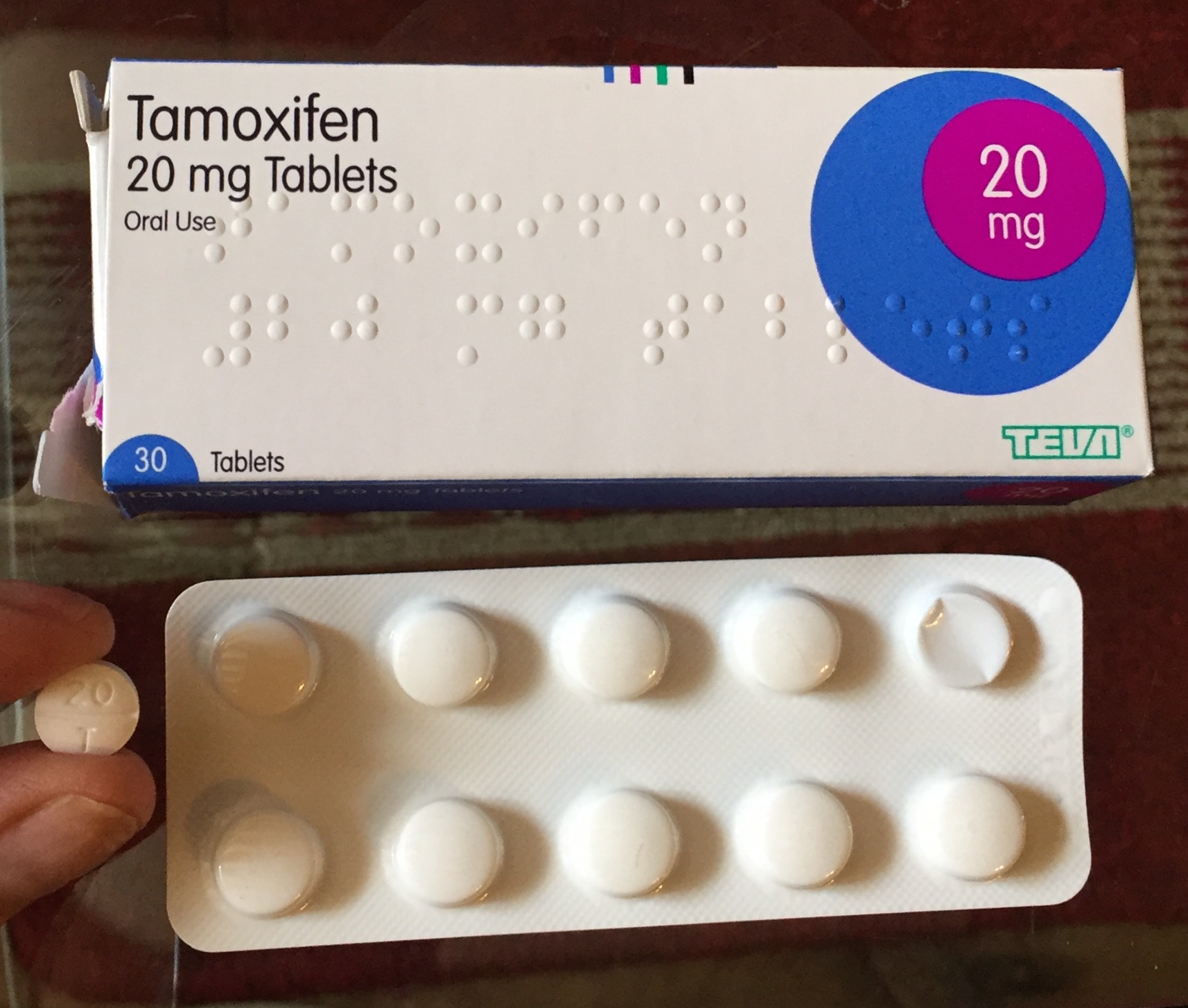
DEXA Time
One of the side effects of both Tamoxifen and Zoladex is that they can weaken your bones, causing early development of osteoporosis. Every patient gets a DEXA scan to look at the state of your bones before treatment, and your GP can then add in calcium and vitamin supplements, or something stronger if needed, to keep your bones healthy.
This was the nicest scan I had. It was done in a small room in the local private hospital. All I had to do was put on a gown and lie on a wide bed (unlike the narrow CT and MRI beds) with a pillow under my knees for about 10 minutes. They look at your lower spine and left hip, and them come up with a fancy number that tells your doctors what your bones are like. Thanks to all the exercise I do, mine were fine, so I didn’t need to have additional supplements.
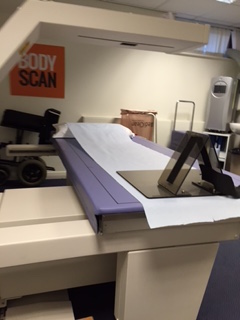
Zoladex
This was the one I was really dreading. It’s an injection that puts a small pellet into your tummy fat, just under the skin, and I was going to have it every month for 5 years. I remember giving the injection to elderly men with prostate cancer when I was a junior doctor, and it’s quite a large needle.
Everybody has a different pain threshold. I asked Twitter what it was like, and the vast majority suggested asking for EMLA cream beforehand. This is a local anaesthetic cream that numbs the skin, and we often use it on children before they have injections. I asked my GP about having the cream, and she ‘gently’ said, “No”. She told me that most patients are fine and don’t feel anything, and that the nurses are very good at giving it, and that I should try it without at first.
I didn’t know what to say. I felt like I had to trust her word and try it without the local anaesthetic. I had to remember to order the Zoladex injection and pick it up from the chemist, and remember to book an appointment with the nurse to have the jab. I had worked myself up into quite a state. Dermot was wonderful and drove me to my first one.
The nurse was lovely, and said that most people feel a sharp scratch, but it’s over in a couple of seconds. She then looked at me and said, “Oh no, not another skinny one”. I took it as a compliment, but when you don’t have much tummy fat (like me), there’s not much to grab and it can be hard to find a different place every month. Anyway, she cracked on, and it was over very quickly, and it was a (very painful) sharp scratch. Afterwards I felt a bit sick, and she told me that it might be sore for a few days, and that every 3-4 injections you can bruise and bleed quite a bit. Done.
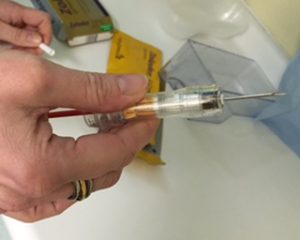
The GP was right – it was OK – physically. But the emotional side of things – driving yourself to have a painful injection, remembering to organise everything for it every month, wondering if this is the injection that will bruise and bleed… I’ve had 3 now, and I’ve learned that the person doing it can make a massive difference. I had a different nurse for the 3rd jab. She took forever to push the needle in, had forgotten to take off the safety catch so then had to fiddle whilst it was in my tummy, and I had a huge painful bruise.
Time for a little rant
It’s made me reflect on how often as doctors (sweeping generalisation here – forgive me), we persuade patients to be brave and try things without pain relief / local anaesthetic / sedation. That extra bit of comfort that could be provided ranges from the small cost of EMLA cream for me, to possibly arranging an overnight stay for someone to have a test under sedation. Patients don’t need to be brave, and as doctors, we are not the ones having all these tests and scans and procedures.
It could be that as a patient the way your doctor ‘sells’ you the test makes you feel you can’t stand up for yourself and demand local anaesthetic / sedation / whatever it is. Why do we feel we can’t contradict the people treating us? Some patients would rather get on with things, deal with any unpleasantness and move on, whereas others would rather not feel anything or not remember anything. If this happens to you in the future, and you’re having a similar discussion, it’s OK to ask for what you want, or see if there is an alternative way of doing things.
Back to the Zoladex
I was fine for about 2 weeks, and then I suddenly became very menopausal overnight. I would wake with a headache that lasted all day and most of the night, accompanied with severe nausea. Apparently this can be normal when your oestrogen levels drop, but I wasn’t prepared for it. Also, if you google ‘waking with a headache’ one of the diagnoses that comes up is a brain tumour. Not good to read!
On top of that, I developed hot flushes during the day, but only 2-3, and they were over in seconds. The worst thing, however, was the night sweats. Every 1-2 hours, starting from about 9-10pm at night, I suddenly start dripping with sweat. The first time it happened, I thought I’d wet myself! I was aware of a trickle of water running down my inner thing. Lovely.
Settling Down
After a bit of research, I’ve discovered that it normally takes about 6 weeks for the side effects to kick in, and that most women find things settle down after 3-6 months. Some women find that a different brand of Tamoxifen can make a huge difference in side effects. I’ve been given 2 different brands and as yet, I can’t tell the difference. I still get hot flushes during the day, and the night sweats remain. This is the worst thing for me as I never get a full night’s sleep. And it’s also very impractical to change the sheets every day, so you get used to going to sleep under a sweaty duvet cover. Acupuncture can apparently help with the sweats, and if I still have them in another couple of months, then I’ll give this a go.
The thing no-one talks about
The other major side effect of having a chemical menopause is the gynaecological aspect of things. To be blunt, most women experience to a certain degree – vaginal dryness, painful sex, loss of libido, pain and irritation when having a wee. I found this a hard topic to talk about as a patient, especially when my doctors have also been my colleagues and friends, and everyone knows my husband.
There is a LOT of controversy about whether topical oestrogen creams and pessaries are safe to use in women with hormone-sensitive breast cancer. The actual amount of oestrogen absorbed into the blood is very small. There are 2 main camps here – those who say – No added oestrogen, ever, just in case the breast cancer comes back. And those who say – quality of life is more important, yes there’s a very small risk the cancer might come back, and even if it does, it’s impossible to put it down to the tiny amount of oestrogen in the cream / pessary.
I guess it boils down to risk – how much risk is a patient willing to take to improve her quality of life, and that of her partner as well? I discovered, through the wonder of Twitter, a vaginal moisturiser and lubricant called Yes – which is available on prescription (so free for cancer patients) and works really well. NHS workers can ask for free samples via their website, and I gave mine to my breast care nurse so she could give them out to patients to try, whilst my own GP prescribed it for me.
If I’m honest, my quality of life now is worse than it was before I was diagnosed, and that’s down to the side effects of the Tamoxifen and Zoladex. It’s not awful, and I would have had to go through the menopause at some point and possibly experienced all of these side effects anyway. But having to do it 10 years’ earlier, and possibly then go through the normal menopause when the tablets stop, is not fun.Yes it’s great that these medicines are keeping me alive, and a lot of people have far worse things to deal with, but every now and again, I think it’s OK to have a little rant. And then you give yourself a talking to, and get on with life.


